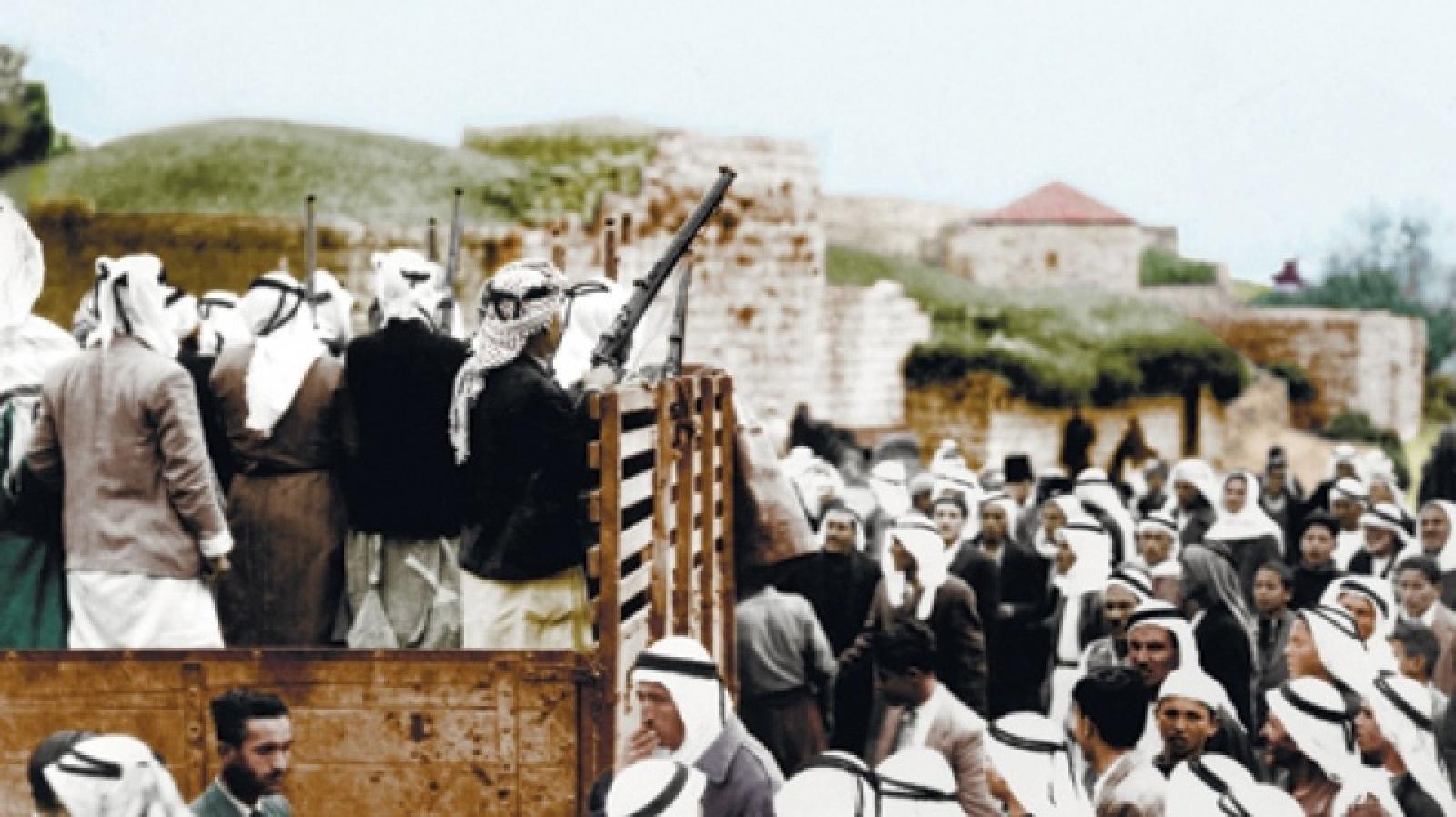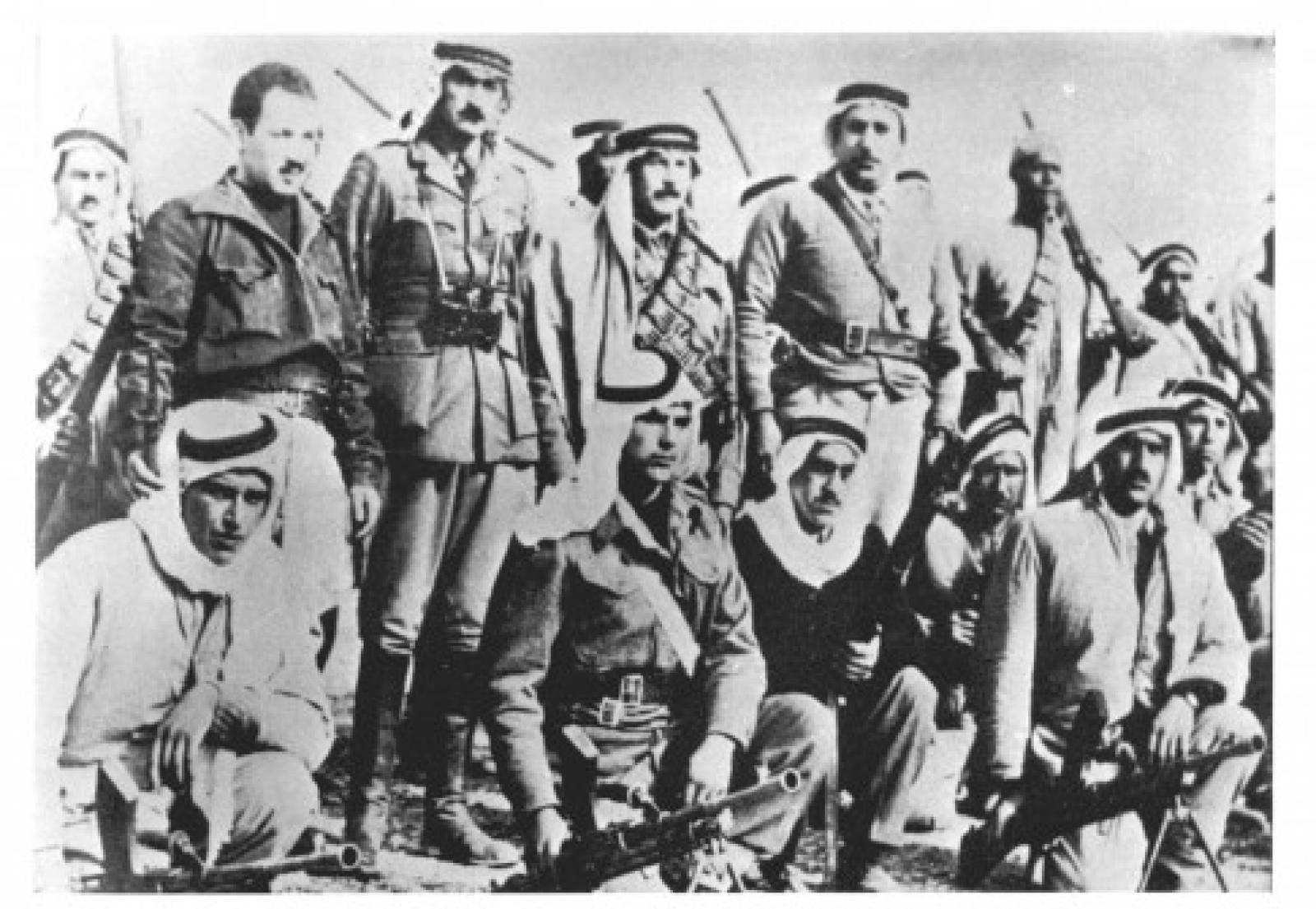Al-Qastal, Jerusalem - Battle of the Fall in 1948
The Battle of al-Qastal was a decisive battle in Palestinian history. It took place during the period preceding the 1948 war (The Nakba) and was part of the military activities of the Zionist gangs within the framework of Operation Nachshon, which was the onset of Plan Dalet, in which Abd al-Qadir al-Husayni, one of the local military leaders, fell in a courageous attempt to defend Jerusalem. This battle took place near the village of al-Qastal, which is considered one of the strategic entrances to the city of Jerusalem.
It is an Israeli military operation whose objective was to completely take down the city of Jerusalem. On The Resurrection and Fate of Israel, Ben-Gurion says the following: “As soon as April 1948 arrived, our war of independence shifted decisively from defense to offense. Operation Nachshon began with the occupation of the road leading to Jerusalem, where we stand now, as well as Bayt Mahsir, and culminated in the occupation of al-Qastal, the fortified hill near Jerusalem.”
However, Operation Nachshon for lifting the siege on Jerusalem at the beginning of April 1948 was defeated by the Arab resistance, and the Bab al-Wad road to Jerusalem remained closed until after the arrival of the Arab armies to Palestine. The rescue forces attacked Mishmar HaEmek, paralyzing the aforementioned Operation Nachshon. That is because the Zionists were forced to refrain from involving their reserve in the Tel Aviv-Haifa area in that operation to attempt opening the road to Jerusalem from the Emwas plain and the entrance to Bab al-Wad, in addition to their failed attack on the al-Qastal village, the key to the road from the Jerusalem side, with their available forces in this city. They attempted this multiple times, especially in May 1948, prior to the arrival of the Arab armies, as they tried to open the aforementioned road through its first entrance from Jerusalem, and from its second entrance at Bab al-Wad from the Tel Aviv side. They were forced to deploy the external reserve forces to push back the Arab attack on Mishmar HaEmek, and take part in the major attacks launched on the various surrounding fronts, [such as] al-Qawuqji forces in the Jenin Triangle, Nablus, and Tulkarm.
Two days later, they began using the training aircraft to bombard the Palestinian forces around al-Qastal area. On April 8, the Palestinian fighters (Mujahideen) retook the village in a battle during which their leader, the commander of the Jerusalem district, Abd al-Qadir al-Husayni, was killed. Haganah reports indicate that a number of Jewish leaders were also killed during the retreat. Days of intense fighting passed before the Palestinian counter-offensive was launched at 1:30 pm under the cover of artillery and machine gun fire, as a New York Times reporter wrote: “They climbed up the extremely steep, rough, rocky slopes, chanting cries of war.” At three o'clock in the afternoon, a force comprising several groups of Palestinian Mujahideen entered the village. However, the Palmach forces retook it with an attack launched April 8-9 night.
When the forces approached the village this time, they were surprised to find it empty because the Mujahideen who had recovered al-Qastal were taking part in the funeral of their leader, martyr Abd al-Qadir Al-Husayni, in the al-Sakhrah Mosque, as Palmach forces surrounded the village with a number of armored vehicles to prevent the arrival of reinforcements and then proceeded to storm it. This attack coincided with the massacre that occurred in Deir Yassin, not more than 5 km away from al-Qastal.
“Al-Qastal has returned once and for all to the hands of the Jews,” states the book entitled, History of the Haganah. As soon as the Palmach forces took over the village, they destroyed its homes, which was a precedent in all the villages that were occupied as part of Operation Nachshon. They justified razing the village's houses to the ground by saying that it facilitated protecting the site, and prevented it from falling back into the hands of the Arabs. In this context, Palestinian historian Aref al-Aref stated that the Zionist forces destroyed all the buildings of the village, including the mosque that houses the shrine. A New York Times report also confirmed that the village mosque was destroyed, but it highlighted that this had happened the previous month, on the night of March 16. The newspaper quoted Abd al-Qadir al-Husayni, who was martyred while defending the village, as saying: "The demolition of the mosque is a shameful act, and the mosque was never used for anything but worship."
The village today
The southern, northern and eastern slopes of the site are covered with the rubble of houses and the ruins of stone terraces, almost obscured by wild grass. The ruins of the ancient fortress still sit atop the mountain. An underground shelter was built on the site, southwest of the fortress. The military trenches are visible in the north and east of the fortress. Carob, fig and olive trees grow on the northern and western sides of the site, while cacti grow on the south side. The whole site, including parts of the fortress, has turned into an Israeli tourist attraction. In 1951, the Maoz Zion settlement was constructed on the lands of the village. Afterwards, it was annexed to the Mevaseret Yerushalayim settlement, which was founded in 1956 upon the lands of Qalunya, to form the Jerusalem suburb known as Mevaseret Zion.
Images

